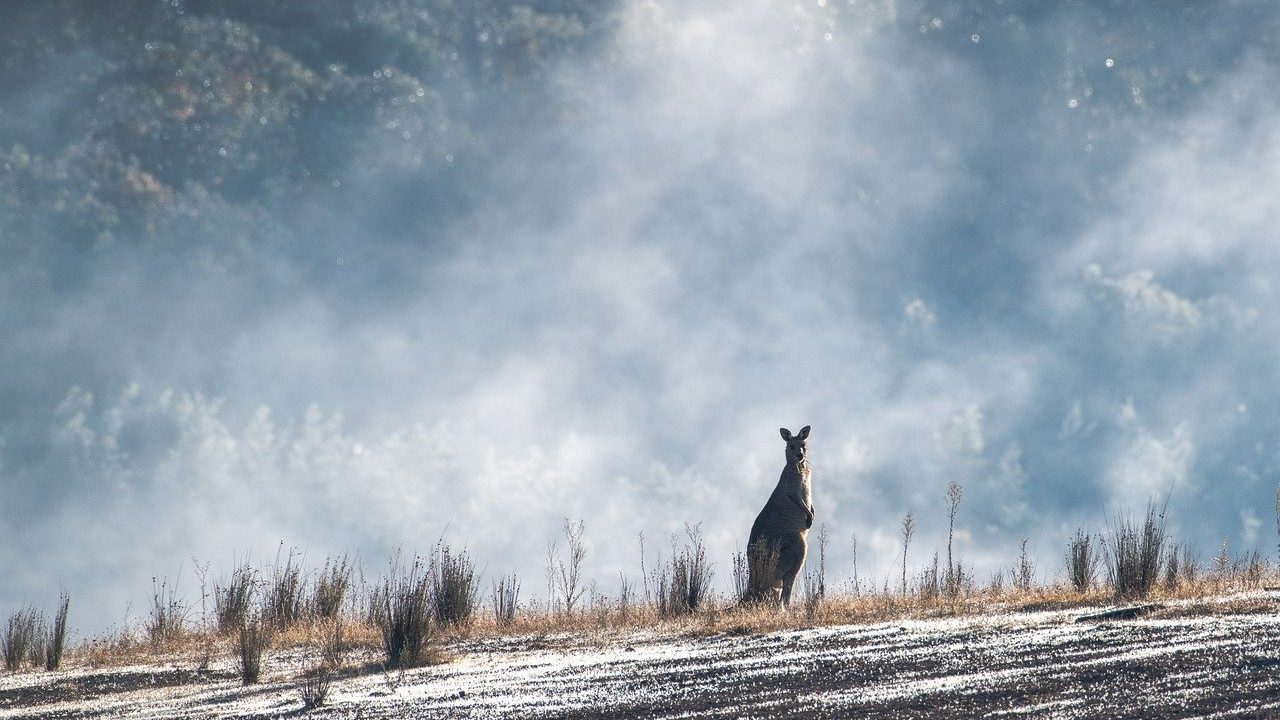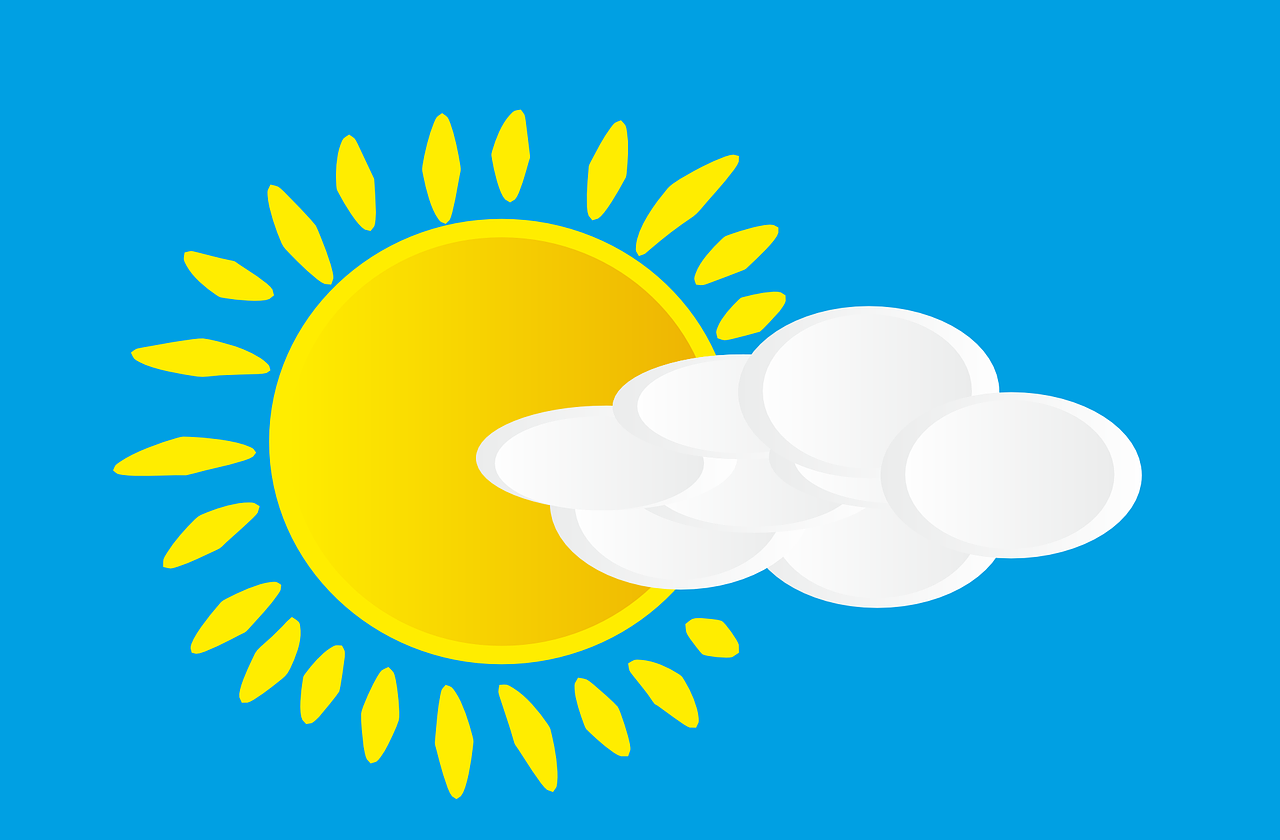
How Bushfire Smoke Traveled Around the World
- News
- 1.6K
It’s not just how hot the fires burn – it’s also where they burn that matters. During the recent extreme fire season in Australia, which began in 2019 and burned into 2020, millions of tons of smoke particles were released into the atmosphere. Most of those particles followed a typical pattern, settling to the ground after a day or week; yet the ones created in fires burning in one corner of the country managed to blanket the entire Southern hemisphere for months.
A pair of Israeli scientists managed to track puzzling January and February 2020 spikes in a measure of particle-laden haze to those fires, and then, in a paper recently published in Science, they uncovered the “perfect storm” of circumstances that swept the particles emitted from those fires into the upper atmosphere and spread them over the entire Southern Hemisphere.
Particles reaching the stratosphere – the upper layer of the atmosphere – most often get there through volcanic eruptions. The ash emitted in the more extreme eruptions dims the sun and cools the planet, as well as producing spectacular sunsets. Prof. Ilan Koren of the Weizmann Institute of Science’s Earth and Planetary Science Department, who conducted the study together with his former student, Dr. Eitan Hirsch, now the Head of the Environmental Sciences Division at the Israel Institute for Biological Research in Ness Tziona, had noticed an extreme increase in a satellite-based measure of particle loading in the atmosphere called AOD – or aerosol optical depth.
In January 2020, those measurements, plotted in standard deviations, showed a deviation three times the normal – some of the highest readings ever obtained, higher even than those from Mt. Pinatubo in 1991. But the timing did not coincide with any volcanic activity. They wondered if fires might be to blame, even though it is rare for the smoke from fires to escape the lower layer of the atmosphere known as the troposphere in significant amounts. The troposphere extends from the ground to a height of several kilometers, and if smoke particles manage to rise that high, they hit an inversion layer called the tropopause that acts as a sort of ceiling between the troposphere and the stratosphere.
Working backward and using data from several satellites, including, in addition to AOD, LIDAR readings that revealed how the particles were distributed vertically in “slices” of atmosphere, the two were able to prove that the source of the spikes was bushfires – specifically those burning in Southeastern Australia. Further analysis of satellite data revealed the broadband of haze in the stratosphere spreading to cover the Southern hemisphere, peaking from January to March and persisting through July; reaching all the way around and back to Australia’s west coast.
How did these smoke particles penetrate through the tropopause ceiling and why did they come from these fires and not the others? One clue, says Hirsch, lay in another, distant forest fire that had occurred several years ago in Canada. Then, too, high AOD levels had been recorded. Both of these fires occurred in high latitudes, away from the equator.
The height of the troposphere shrinks at these latitudes: Over the tropics, its upper ceiling can reach up to 18 km above the surface, while somewhere above the 45th parallel – North and South, it takes a sudden step down to around 8-10 km in height. So the first element enabling the particles’ trans-layer flight was simply having less atmosphere to cross.
Pyrocumulus clouds – clouds fueled by the fires’ energy – were considered as a means of transporting smoke to the stratosphere. However, when inspecting the satellite data, Hirsch and Koren noticed that pyrocumulus clouds formed only over a small fraction of the fires’ duration, and they were mostly seen over fires burning on the central part of the coast. In other words, these clouds could not explain the large amounts found to be transported to the stratosphere, and an additional mechanism for lifting smoke downwind from the sources was missing.
This brings up the second element: the weather patterns in the strip known as the mid-latitude cyclone belt that runs through the southern end of Australia, one of the stormiest regions on the planet. The smoke was first advected (moved horizontally) by the prevailing winds in the lower atmosphere to the Pacific Ocean, and then some of it converged into the deep convective clouds there and was lifted in the clouds’ core into the stratosphere. An interesting feedback mechanism is known as “cloud invigoration by aerosols” can further deepen the clouds. In a previous study, the authors had shown that in conditions such as the pristine environment over the Southern Ocean, the convective clouds are “aerosol limited.” The elevated smoke levels could thus act as cloud condensation nuclei, allowing the clouds to develop deeper and thus increasing the number of clouds that able to penetrate the tropopause and inject the smoke into the stratosphere.
Up in the stratosphere, the particles found themselves in a different world than the one they had just left. If below they were at the mercy of mixing and churning air currents, up on top the air moves in a steady, linear fashion. That is, there was one strong current, and it was moving them eastwards over the ocean to South America and back over the Indian Ocean toward Australia, and slowly settling around the entire hemisphere. “People in Chile were breathing particles from the Australian fires,” says Hirsch. By sailing on an endless air current, these particles remained airborne for much longer than lower atmosphere smoke particles.
“For people on the ground, the air may have just seemed a bit hazier or the sunsets a bit redder. But such a high AOD – much, much higher than normal – means sunlight was getting blocked, just as it does after volcanic eruptions,” says Koren. “So the ultimate effect of that smoke on the atmosphere was cooling, though we still do not know how much influence that cooling and dimming may have had on the marine environment or weather patterns.
“There are always fires burning in California, in Australia, and in the tropics,” he adds. “We might not be able to stop all of the burnings, but we do need an understanding that the precise locations of those fires may grant them very different effects on our atmosphere.”
Prof. Ilan Koren’s research is supported by the de Botton Center for Marine Science; the Sussman Family Center for the Study of Environmental Sciences; the Dr. Scholl Foundation Center for Water and Climate Research; the Ben May Center for Chemical Theory and Computation; Scott Eric Jordan; the Yotam Project; the estate of Emile Mimran; and the European Research Council. Prof. Koren is the incumbent of the Beck / Lebovic Chair for Research in Climate Change.
If you liked this article, then please subscribe to our YouTube Channel for the latest Science & Tech news. You can also find us on Twitter & Facebook


